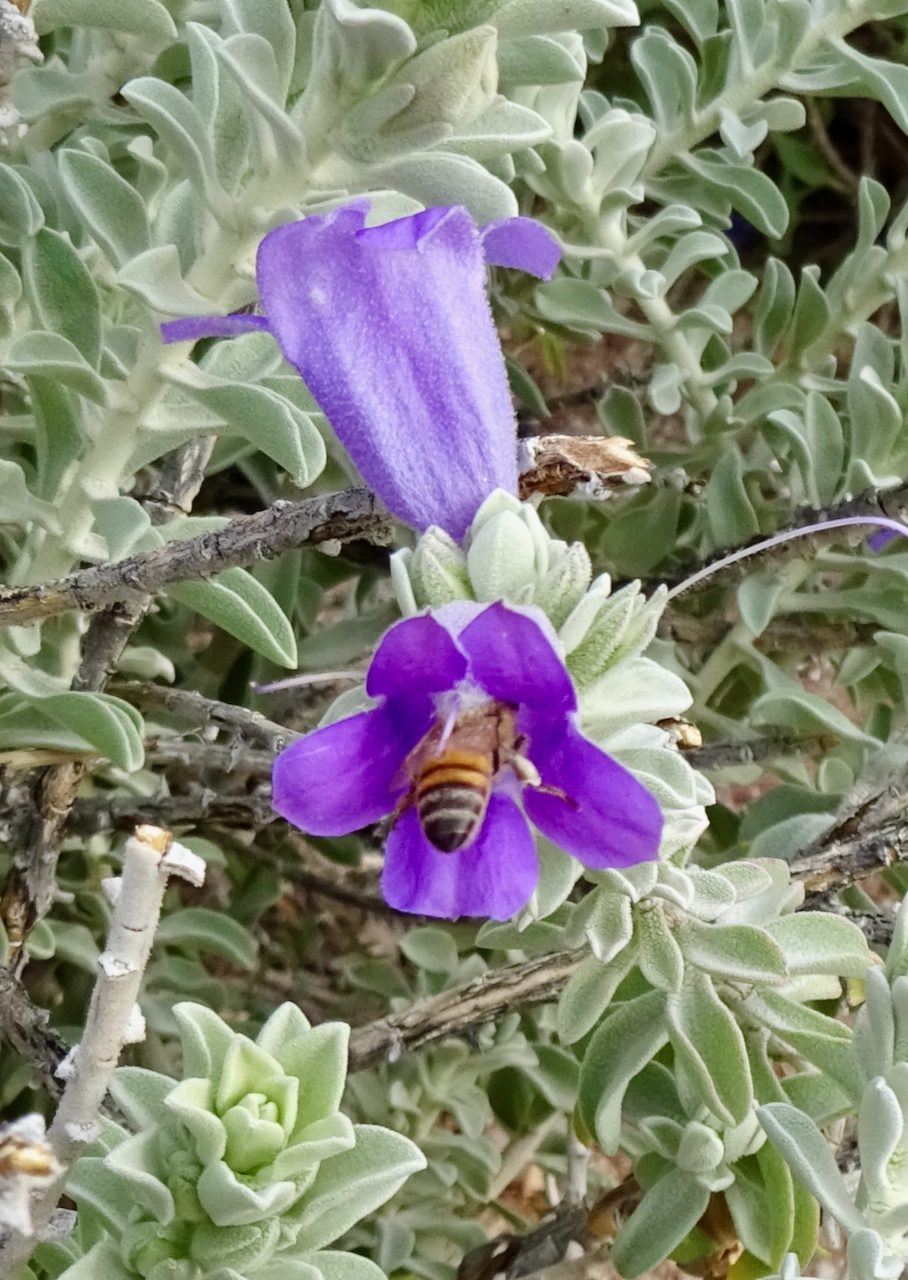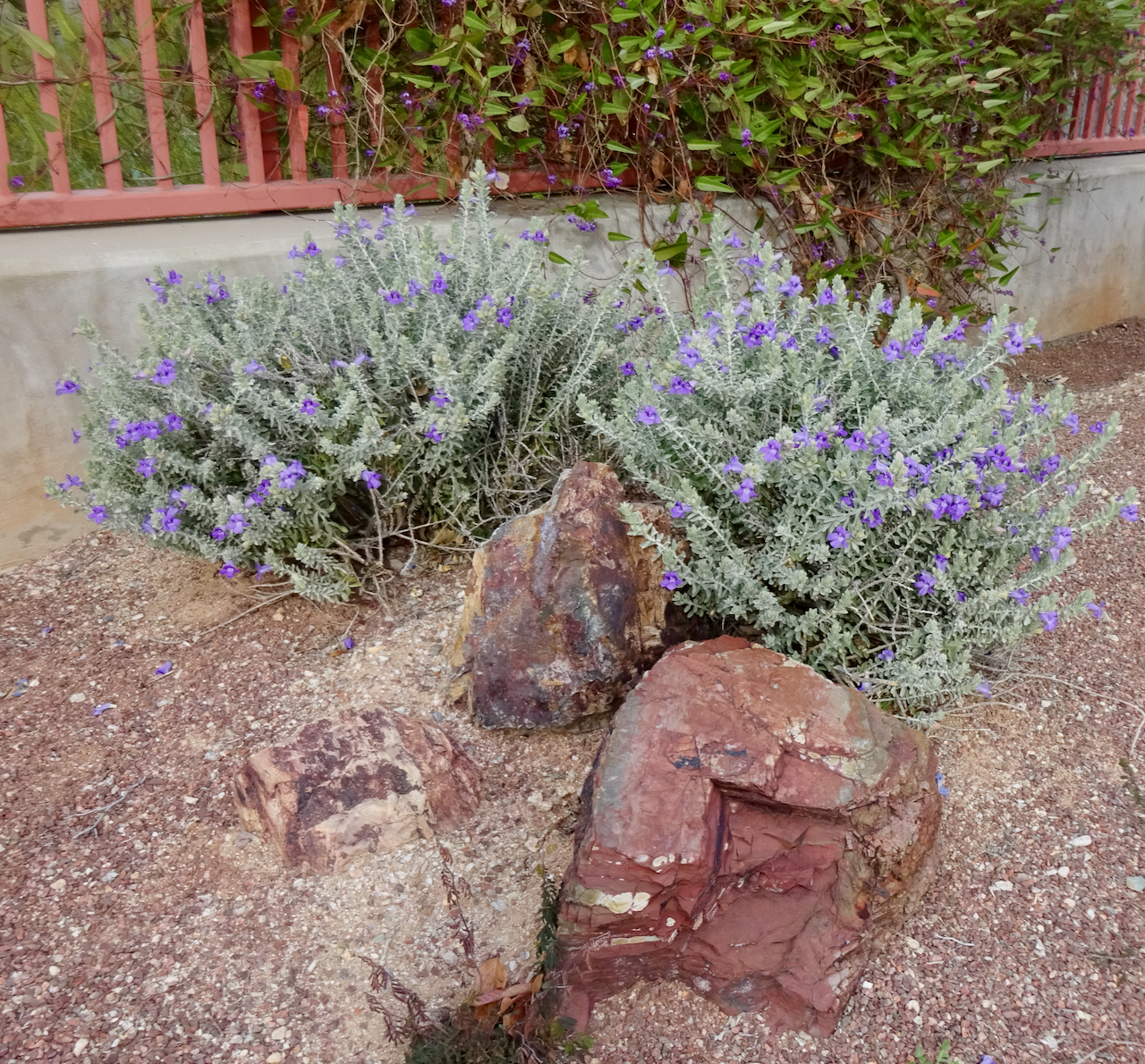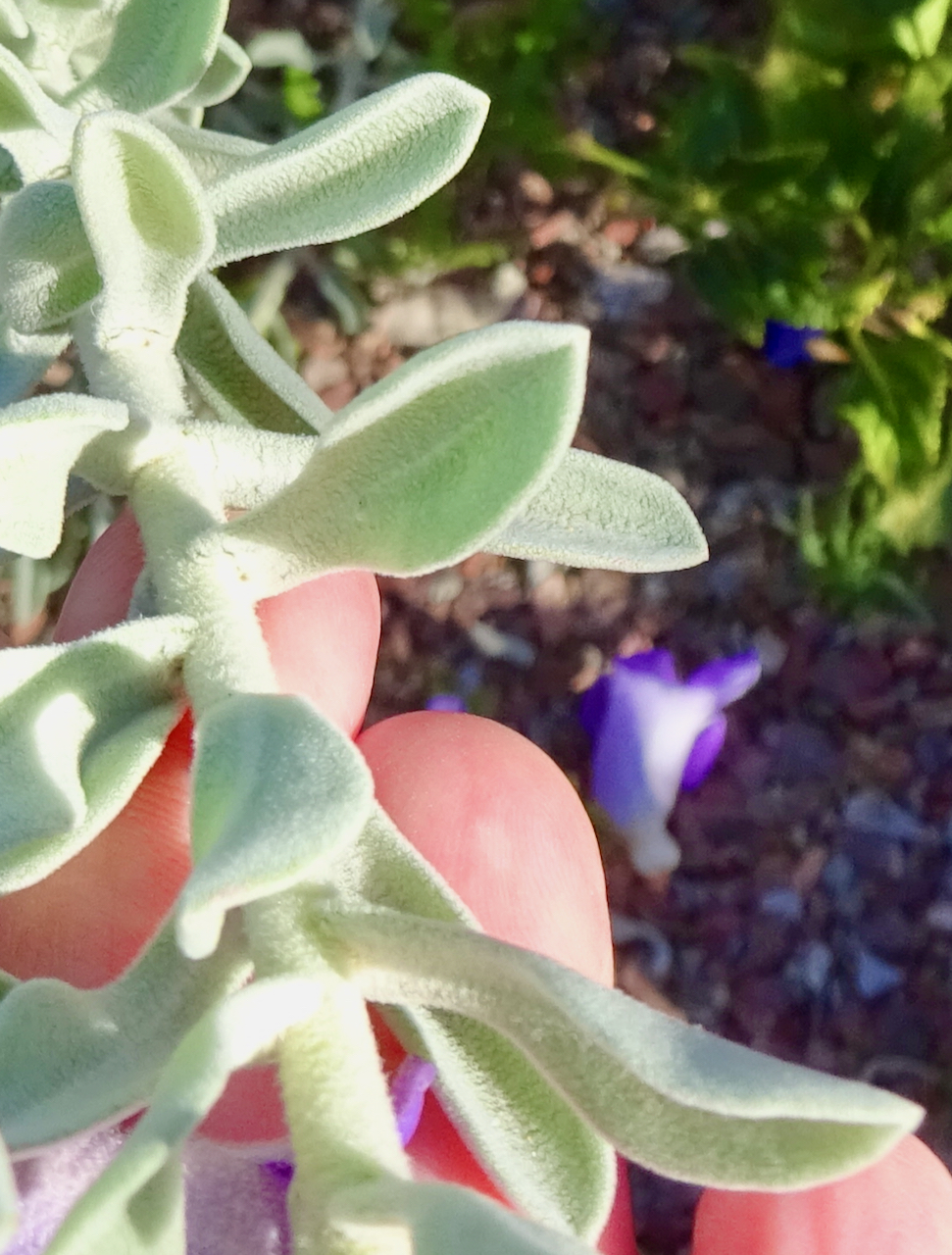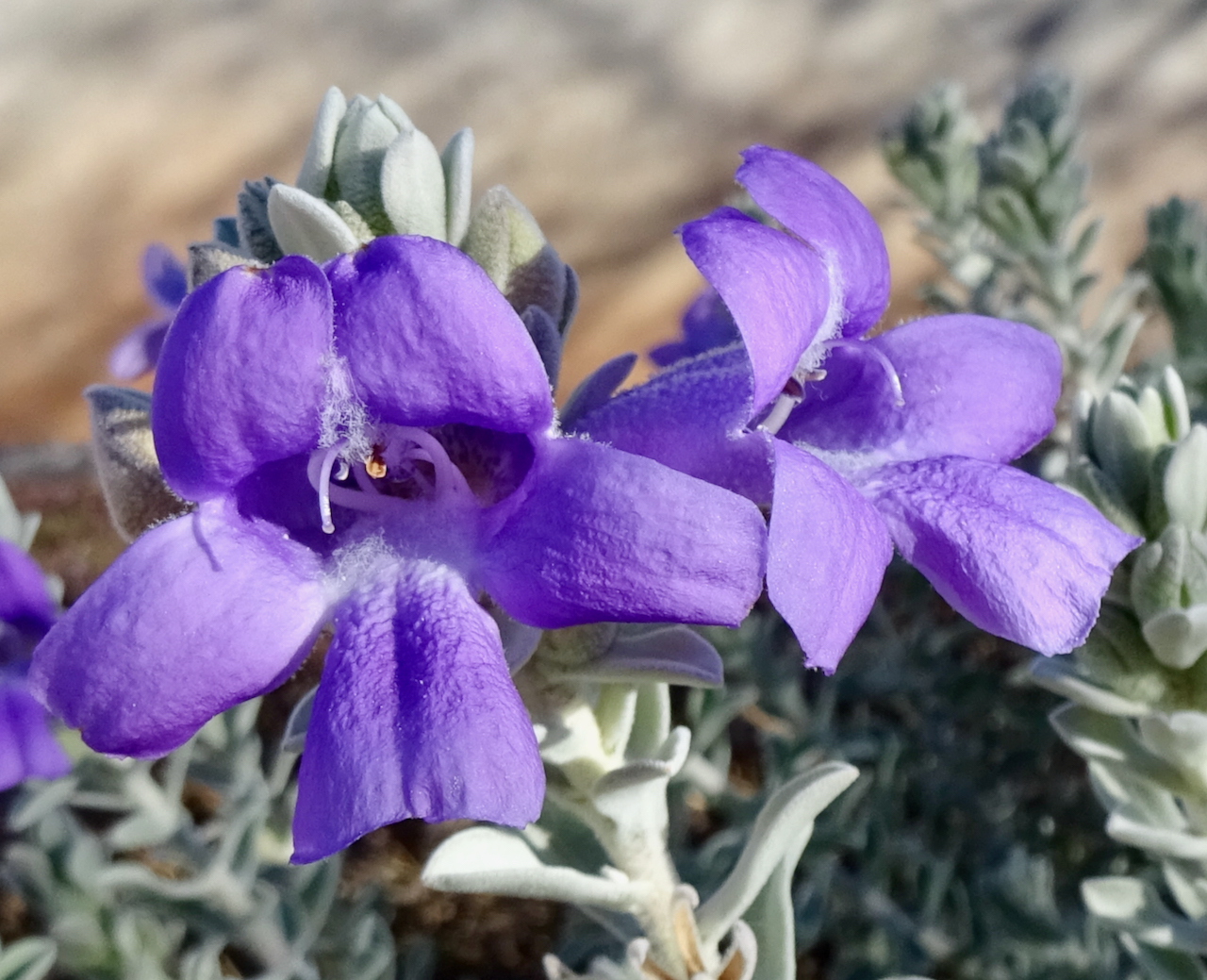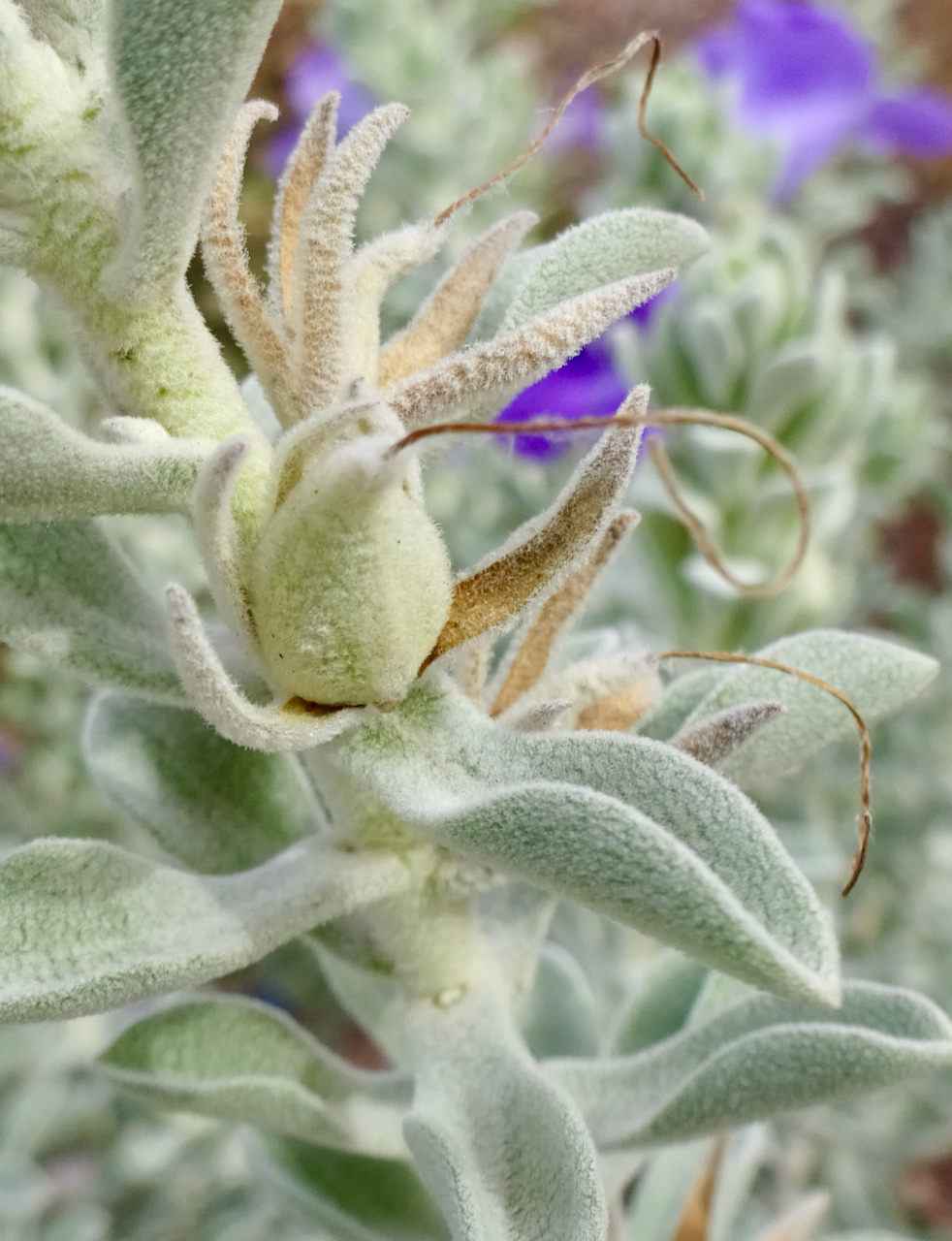Blue Emu Bush
Eremophila hygrophana
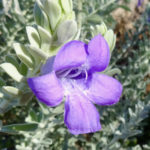
About the Plant
Blue emu bush is a recent addition to the nursery trade. You will often see this plant listed as 'Blue Bells', sometime with single quotes indicating it is a cultivar, sometimes as a trademarked™ name.
This evergreen (evergray?) shrub from Western Australia has large, showy purple flowers, heavily in spring and sporadically the rest of the year. The silvery foliage makes a nice contrast with other plants all of the year and may remind you of the leaf and flower color of some Texas rangers.
Grow the small shrub (it grows to about 3 ft x 3 ft) in full sun and well-drained soil. Nursery websites suggest watering this plant only once a week in the heat of the summer, less in cooler weather, especially if it is growing in heavier soils. Let it keep its naturally neat, rounded form. It only needs pruning to remove frost-damaged branches if the temperatures go below 17 degrees F.
Wildlife value: definitely attracts bees. Said to also attracts hummingbirds and large butterflies.
More Information
